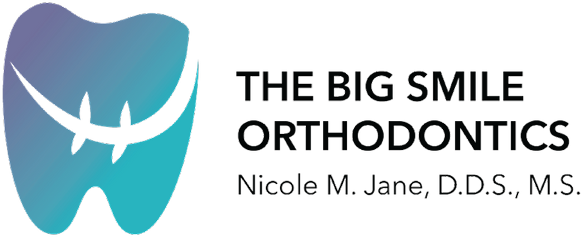Braces 101
Life with Braces
Our number one goal is to make sure your entire journey with our office, especially your life with braces, is comfortable, fast, and as easy as we can possible make it.
We promise your experience with orthodontics, even if it may be a little challenging sometimes, is one you won’t regret. There is nothing more satisfying than knowing your smile lights up the room.
If you have a question or concern about your braces, that means someone has probably had it before! We are always available to answer any questions that might arise, so give us a call anytime.
Because our staff is so experienced with braces, we’ve compiled a list of our best tips and tricks to get you used to your braces and make sure you have the perfect smile when they come off. Scroll down or click one of the following categories to learn more.
A to Z of Braces
Archwire
The metal wire that connects and guides your brackets into the correct position
Bracket
Metal attachments that hold your wire in place to help move your teeth
Elastics
Small rubber bands that attach to your brackets to help fit your teeth together
Hook
Located on some of your brackets to hold the elastics in place
Power Chain
An elastic that connects all of your brackets to pull your teeth closer together
Wax
Orthodontic relief wax is a home remedy to alleviate soreness and irritations in your mouth
Brushing with Braces
Oral hygiene while you’re in braces or have an appliance is extremely important! Keeping up your brushing and flossing routine will ensure your teeth are white and pearly when your braces come off. If you don’t brush and floss properly, you may end up with plaque build up and consequently white spots! Just remember: braces do not cause white spots, bad oral hygiene does.
Therefore, you should continue to see your general dentist every six months at minimum — if you go more frequently, that’s great! Below are some tips to brushing and the special spots to pay attention to.
- Use a soft-bristle brush and a tartar control toothpaste with fluoride.
- Brushing after every snack or meal is what you should aim for, but at minimum brush at least twice a day.
- Proper brushing should take around two minutes.
- Floss at least once a day to get the areas your toothbrush misses. Before bed is an excellent time.
- The most effective time to use an antiseptic mouthwash or fluoride rinse is after you’re done brushing and flossing.
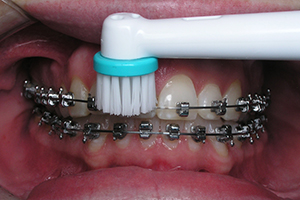
Brush every surface. Pay special attention to the area between your braces and gums.

Make sure you brush in a circular motion to remove any excess food.
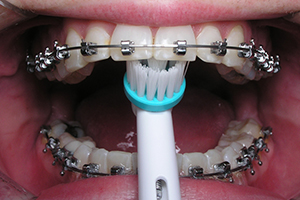
Brush behind your teeth, any chewing surfaces, and your tongue.
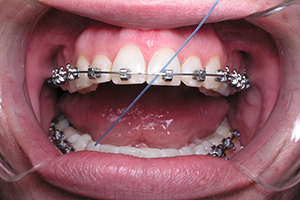
A floss threader will help you guide the floss under your wires. If you need more, just ask us!
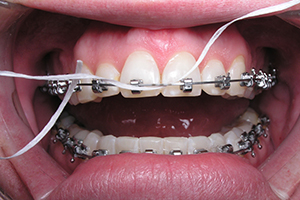
Floss at least once a day using waxed floss. Be sure to curve the floss in a “C” shape around your teeth.

You can use a special proxy brush to help you clean hard to reach places around your brackets.
Foods to Avoid
“What can’t I eat?” is always one of the most popular questions we get. However it’s not always about what you can’t eat, but about changing how you eat it. Stay away from hard, chewy, and sticky things as much as possible! If you have questions about a particular food, ask us: we’re always here to help. Below is a list of foods to avoid or how to change your eating habits to prevent breaking a bracket.
Sticky Foods
skittles
caramels
tootsie rolls
gum (even sugarless!)
Hard Foods
nuts
hard candy
cold pop tarts
frozen candy bars
Crunchy Foods
popcorn
ice cubes
doritos/chips
hard taco shells
Chewy Foods
bagels
licorice
sub buns
granola bars
Biting into Food
cut corn off the cob and slice fruits and veggies into small, bite-sized pieces
Meat on the Bone
meat on the bone, like chicken wings or ribs, should be cut off the bone or boneless
Sports and Braces
Your braces won’t affect your game at all! You can still dunk, kick, score, swim, and run all you want, but if you play a contact sport like football or hockey you have to wear a loose-fitting mouthguard. Because of the loose-fitting nature, your teeth will still be able to move, but it also allow us to protect your teeth and cheeks. We can provide a mouthguard for you or recommend one for you to try.
Do not play with your mouthguard while wearing it! This may cause your brackets to get stuck in the plastic.
If you get hit in the mouth, check for damage. Make sure your brackets are not stuck to your cheeks or causing irritation. If you notice loose teeth or loose parts, let us know immediately! You can alleviate temporary discomfort by applying wax to the irritated area and rinse with warm salt water. If it is a true emergency, please call 911.
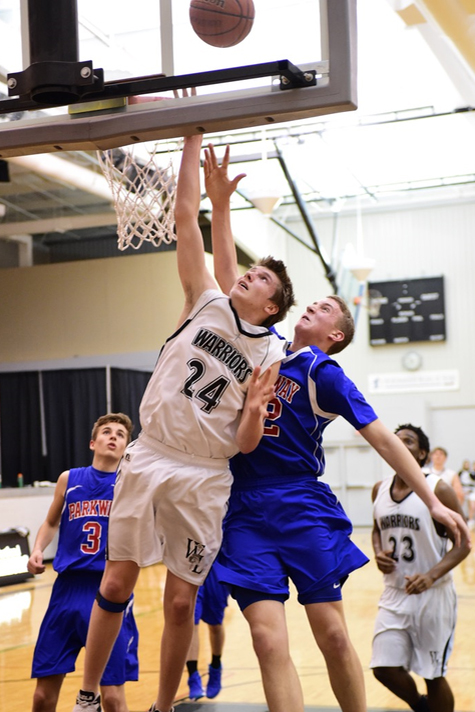
What to do when something comes loose
Sometimes brackets and wires may come loose, but if you are in pain or discomfort please call our office (even if it’s over the weekend). Follow the prompts to be directed to an on-call assistant or doctor. If you cannot come in immediately for an appointment, you can apply wax to the irritation to temporarily alleviate it.
Brackets
If a bracket feels loose and you can slide it, use a piece of orthodontic wax and attach it to the bracket next door! Please let us know before your next appointment that something is loose or detached so that we can add the appropriate time to fix it!
Wires
If your wire feels loose or out of place, contact our office to schedule an appointment so we can check — even if you have an appointment coming up we may need to add time to address any issues. If it is causing irritation to your cheeks, attach some wax to it to ease the irritation.
Teeth
Loose teeth are completely normal with braces! In order to move your teeth around, the braces must first loosen them up a bit so they move easier. Once they are in the correct position, your teeth will feel back to normal in no time.
Home soreness remedies
You won’t be sore when your braces go on, we promise, but after a day or two your teeth may feel a little tender. This is perfectly normal! Soreness means the braces are working and your teeth are starting to shift. You won’t be sore forever, but here are some tips and tricks to help you out.
Ice and Gel Packs
An ice or gel pack applied to the outside of your mouth will decrease inflammation and ease any discomfort. Cold water and ice cream also help a lot!
Salt Water Rinse
To ease sores inside your mouth, mix 1 teaspoon of salt with 1 cup of warm water. Swish for a few minutes 4-5 times per day but do not swallow the mixture!
Orthodontic Wax
Use your orthodontic wax as a buffer between your sores and your brackets or wires. This will prevent your new braces from irritating your cheeks and lips.

